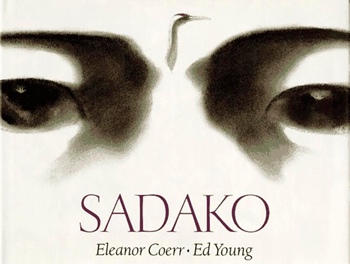Description
In this reinvention of Sadako and the Thousand Paper Cranes, images by Caldecott medalist Ed Young and new text by Eleanor Coerr come together to inspire children of all ages.
In her novel Sadako and the Thousand Paper Cranes, Eleanor Coerr told the moving story of Sadako and her brave struggle against leukemia, the “atom-bomb disease,” which she developed when she was twelve, just ten years after the bomb was dropped on Hiroshima.
The novel became a classic, and when Sadako’s story was to be made into a film, Caldecott medalist Ed Young was asked to do the illustrations. With love and commitment, he created nearly 300 hauntingly beautiful pastels which bring to life the spirit of Sadako, her courage and her strength.
"A masterful collaboration that will attract many new friends for Sadako."—School Library Journal
"Coerr's condensed text succeeds in retaining the simple lyricism of the original, allowing the leukemia-stricken Sadako to emerge as a quietly courageous girl."—Publishers Weekly
About the Author
Eleanor Coerr was born in Kamsack, Saskatchewan, Canada, and grew up in Saskatoon. Two of her favorite childhood hobbies were reading and making up stories.Her fascination with Japan began when she received a book called Little Pictures of Japan one Christmas. It showed children in beautiful kimonos playing games, chasing butterflies, and catching crickets. She pored over the colored illustrations, dreaming of one day joining those children in Japan. Her best friend in high school was a Japanese girl whose family introduced her to brush painting, eating with chopsticks, and origami. Eleanor's desire to visit that magical place never faded, and her well-thumbed copy of that favorite book is still in her library.Eleanor began her professional life as a newspaper reporter and editor of a column for children. Luckily, she traveled to Japan in 1949 as a writer for the Ottawa Journal, since none of the other staff wanted to go to a country that had been devastated by war. To learn Japanese, Eleanor lived on a farm near Yonago for about one year, absorbing the culture and enjoying rural celebrations. Soon she was able to visit nearby schools and speak to young audiences about her country. Eleanor wrote and illustrated Circus Day in Japan, using the farm family and a visit to the circus as models. It was published in Tokyo in 1953.Her most difficult trip while she was in Japan was to Hiroshima. Eleanor was shocked by the horrible destruction and death caused by one atom bomb. Of course, she did not know Sadako Sasaki at that time, although she was living there with her family. The misery and suffering Eleanor witnessed was burned into her mind, and she hoped future world leaders would avoid wars at all costs.One beautiful day in 1963, Eleanor revisited Hiroshima and saw the statue of Sadako in the Hiroshima Peace Park. Impressed by the stories she heard about Sadako's talent for running, courage when faced with cancer, and determination to fold one thousand paper cranes, Eleanor was inspired to find a copy of Kokeshi, Sadako's autobiography.Eleanor looked everywhere she could think of and asked all of her Japanese friends to help. Since the school had copied the ninety-four pages and stapled them together, most of the books had fallen apart. Years passed, and Eleanor continued writing for newspapers in various countries and wrote more children's books. But she was always hoping to find Kokeshi.One fateful afternoon, Eleanor was having tea with a missionary who had lived in Hiroshima all through the war."Eleanor," she said, "you should write a biography of Sadako Sasaki for American children to read.""I would love to," said Eleanor, "but I must have Kokeshi to get all the true facts about Sadako."The missionary took Eleanor to her attic. Lo and behold, at the bottom of an old trunk was an original copy of Kokeshi. Eleanor rushed to have it translated properly and began writing Sadako and the Thousand Paper Cranes as soon as she could."It's like magic. I was meant to write her story," Eleanor said.
